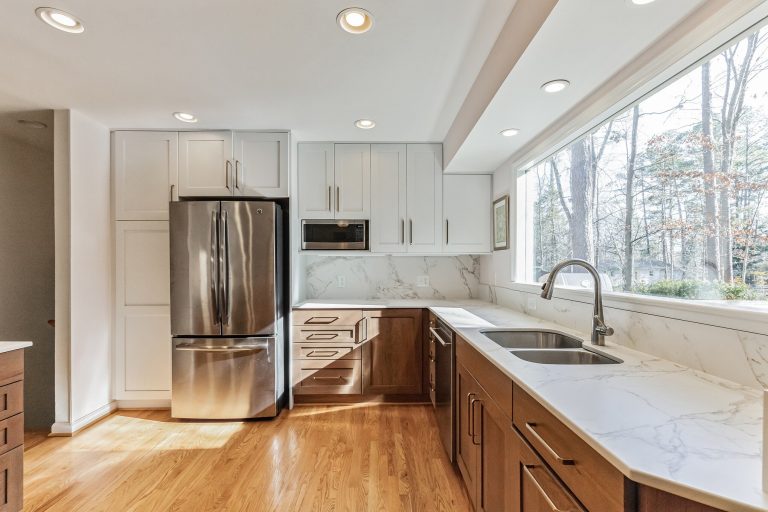Organizing kitchen drawers may sound easy, but even small mistakes can turn them into a mess. The good news is that you can avoid these common problems with a little know-how. In this post, we’ll go over the top kitchen drawer organization mistakes that could be making things harder—and, more importantly, how to fix them.
By the end of this post, you’ll have the tips you need to make your drawers more useful and stress-free. Ready to take control of your kitchen? Let’s get started!

Credit: www.youtube.com
1. Common Drawer Clutter Culprits
Stuffing your drawers with too many things makes it harder to find what you need. Some items are used only rarely but take up a lot of space. For example, extra spatulas or scissors are common clutter. Broken gadgets and old takeout menus can also pile up quickly. These items make drawers harder to use and more frustrating. Only keep the things you use often.
Mixing kitchen tools with other random stuff can cause confusion. Keys, batteries, and rubber bands don’t belong in kitchen drawers. Non-kitchen items take up space that should be reserved for cooking tools. This makes it harder to find what you need while cooking. Separate these items into a different drawer or box. Keep only kitchen tools in your kitchen drawers for a cleaner and more organized space.
2. Ignoring Proper Categorization
Throwing all your kitchen tools into one drawer can make it difficult to find what you need. Every tool should have its own place. Assign spots for things like spoons, knives, and peelers. Dividers can help keep similar items together. Keep only the tools you use most often and get rid of the ones you don’t. Labeling sections can make finding items faster and easier.
Cooking tools and baking supplies should not be mixed. Keep your measuring cups, spatulas, and rolling pins separate from your cooking spoons and ladles. Mixing these items makes it harder to find what you need. Organizing by purpose will save time and effort. Use small containers for baking supplies and larger ones for cooking tools. Keep heavy tools away from fragile ones to prevent damage.
3. Skipping Drawer Dividers
Not using dividers in your drawers can lead to a cluttered mess, making it difficult to find what you need quickly. Dividers help keep your utensils, tools, and gadgets separated, saving you time and reducing stress.
3.1 Challenges Of Unstructured Storage
When you don’t use dividers, everything gets mixed together, making the drawer a mess. Small items like scissors or clips get lost under bigger tools. This makes it harder to find things quickly. Loose items often slide around when you open the drawer, which can break fragile items like glass or plastic. Unorganized storage wastes space and can be frustrating.
3.2 Benefits Of Using Organizers
When you don’t use dividers, everything gets mixed together, making the drawer a mess. Small items like scissors or clips get lost under bigger tools. This makes it harder to find things quickly. Loose items often slide around when you open the drawer, which can break fragile items like glass or plastic. Unorganized storage wastes space and can be frustrating.
4. Neglecting Drawer Maintenance
Keeping unused items in your drawers just makes things messy. Old tools or expired items take up space and create clutter. Regularly clearing out what you don’t need helps keep your drawers neat and useful. Set aside time each month to remove things you don’t use. By doing this, your drawers stay organized and easy to use.
Kitchen drawers also collect crumbs, dust, and spills. If you don’t clean them, dirt can build up and even attract pests. Wipe down your drawers with a damp cloth to remove dirt, and use a small vacuum for crumbs. Make sure to clean drawer liners to avoid sticky stains. Regular cleaning keeps your drawers fresh and hygienic.
5. Choosing The Wrong Organizers
If your dividers don’t fit properly, they can make things worse. Dividers that are too big or too small waste space and make the drawer look messy. Always measure your drawers before buying dividers to make sure they fit well. Custom-sized dividers are usually better at keeping items in place.
Cheap, weak organizers break easily and waste your money. Plastic dividers, for example, can crack if you use them a lot. Wood or metal dividers tend to last longer and hold up better over time. Choose organizers made from materials that won’t break easily.
6. Storing Rarely Used Items
Filling your drawers with items you rarely use just makes them messy and wastes space. Tools you only need once in a while should be stored elsewhere. Keep those items in a separate container or box, not in a drawer you use every day.
6.1 Wasting Space On Seasonal Tools
Many drawers are cluttered with tools used only a few times a year. Items like holiday cookie cutters or grilling tools often take up valuable space. These tools should be stored in a separate box or container. Keep them in a cabinet or pantry instead of a daily-use drawer. This frees up space for things you use every day.
6.2 Prioritizing Daily Use Essentials
Items you use every day, like spoons, knives, and spatulas, should be easy to grab. If you mix them with rarely used items, cooking can become more difficult. Use dividers to organize them and place these essentials in the top drawers for easy access. This saves time and keeps your kitchen workflow smooth.
7. Forgetting About Accessibility
If you don’t consider accessibility, your drawers can get cluttered and hard to reach. Keep frequently used items where you can easily get to them. Avoid putting deep, unorganized items in the back of the drawers because it makes them harder to find and use.
7.1 Placing Frequently Used Items At The Back
Items you use often should be placed near the front of your drawers. Putting them in the back wastes time and energy. In daily cooking, it’s important that you can easily grab your tools. Make sure things like spoons, spatulas, and measuring cups are placed where they’re quick to reach.
7.2 Ignoring Drawer Depth And Size
The size of your drawers impacts what you can store. Oversized items may block the drawer from closing properly. Small drawers aren’t great for big tools. Measure your drawer size before you start organizing. Avoid cramming in too many items that make the drawer hard to use. Use dividers to make the space more manageable and organized.
8. Overlooking Aesthetic Appeal
ome organizers can make your drawers look messy if they don’t match the style of your kitchen. If you mix too many colors or patterns, it can create visual clutter. Choose organizers that fit with your kitchen’s theme. A simple, unified style will make the drawers look clean and neat. If your kitchen has muted tones, stick to neutral-colored organizers for a balanced look.
Having too many items in your drawers can ruin the minimalist vibe of your kitchen. When drawers are overstuffed, they feel chaotic and hard to manage. Get rid of unnecessary gadgets or tools to open up space. A clean, simple design makes drawers easier to use and more pleasant to look at. Go for organizers with smooth finishes and simple shapes for a tidy, minimalist setup.
Video Guide from https://www.youtube.com/@SimplifyYourSpace
9. Frequently Asked Questions
How To Best Organize Kitchen Drawers?
Organize kitchen drawers by grouping similar items together. Use dividers or trays to separate utensils, tools, and gadgets. Store frequently used items in top drawers for easy access. Keep rarely used items in lower drawers. Label sections for quick identification.
Declutter regularly to maintain order and maximize space.
How Do You Decide Where To Put Things In Kitchen Cabinets?
Organize items by frequency of use. Keep daily essentials in accessible spots and group similar items together. Place heavy items low and lightweight ones higher. Store cookware near the stove and utensils near prep areas. Maintain a logical flow for convenience and efficiency.
Why You Should Replace All Of Your Kitchen Cabinets With Drawers?
Replacing cabinets with drawers improves accessibility, maximizes storage space, and enhances kitchen organization. Drawers provide easier access to items.
What Should Be In My Kitchen Drawers?
Organize kitchen drawers with utensils, cutlery, measuring tools, spices, dish towels, gadgets, food wraps, and baking essentials. Keep frequently used items accessible.
10. Conclusion
Organizing your kitchen drawers may seem tough, but it gets easier when you avoid common mistakes. Start by clearing out the clutter and grouping similar items together. Don’t overstuff your drawers so that everything remains easy to find. Use dividers or trays to keep your utensils and tools organized. Keep the things you use most often within arm’s reach for quick access.
Stick to your organization system to keep things tidy over time. Even small changes can make a big difference in how your kitchen works. With these simple tips, your kitchen drawers will stay neat and functional. Make your space simpler and enjoy a more organized kitchen every day.



